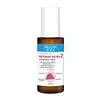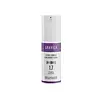What's inside
What's inside
 Key Ingredients
Key Ingredients

 Benefits
Benefits

 Concerns
Concerns

 Ingredients Side-by-side
Ingredients Side-by-side

Water
Skin ConditioningButylene Glycol
HumectantGlycerin
HumectantIsononyl Isononanoate
EmollientC15-19 Alkane
SolventDimethyl Isosorbide
SolventEthylhexyl Stearate
EmollientHydrogenated Polydecene
EmollientPhenoxyethanol
PreservativeSqualane
EmollientAvena Sativa Kernel Extract
AbrasiveSodium Acrylate/Sodium Acryloyldimethyl Taurate Copolymer
Emulsion StabilisingIsohexadecane
EmollientCarbomer
Emulsion StabilisingHydroxypinacolone Retinoate
Skin ConditioningChlorphenesin
AntimicrobialPotassium Hydroxide
BufferingBetaine
HumectantBHT
AntioxidantBisabolol
MaskingDisodium EDTA
Polysorbate 80
EmulsifyingButyrospermum Parkii Butter
Skin ConditioningAloe Barbadensis Leaf Juice Powder
Skin ConditioningSorbitan Oleate
EmulsifyingSodium Hyaluronate
HumectantTocopheryl Acetate
AntioxidantEthylhexylglycerin
Skin ConditioningXanthan Gum
EmulsifyingCaprylyl Glycol
EmollientGlyceryl Caprylate
EmollientLactic Acid/Glycolic Acid Copolymer
Skin ConditioningPhenylpropanol
MaskingPalmitoyl Tetrapeptide-50
Skin ConditioningPolyvinyl Alcohol
Heptapeptide-15 Palmitate
Skin ConditioningHydrolyzed Collagen
Emollient1,2-Hexanediol
Skin ConditioningWater, Butylene Glycol, Glycerin, Isononyl Isononanoate, C15-19 Alkane, Dimethyl Isosorbide, Ethylhexyl Stearate, Hydrogenated Polydecene, Phenoxyethanol, Squalane, Avena Sativa Kernel Extract, Sodium Acrylate/Sodium Acryloyldimethyl Taurate Copolymer, Isohexadecane, Carbomer, Hydroxypinacolone Retinoate, Chlorphenesin, Potassium Hydroxide, Betaine, BHT, Bisabolol, Disodium EDTA, Polysorbate 80, Butyrospermum Parkii Butter, Aloe Barbadensis Leaf Juice Powder, Sorbitan Oleate, Sodium Hyaluronate, Tocopheryl Acetate, Ethylhexylglycerin, Xanthan Gum, Caprylyl Glycol, Glyceryl Caprylate, Lactic Acid/Glycolic Acid Copolymer, Phenylpropanol, Palmitoyl Tetrapeptide-50, Polyvinyl Alcohol, Heptapeptide-15 Palmitate, Hydrolyzed Collagen, 1,2-Hexanediol
Water
Skin ConditioningButylene Glycol
HumectantCyclopentasiloxane
EmollientPolysorbate 20
EmulsifyingPropylene Glycol
HumectantCaprylic/Capric Triglyceride
MaskingNiacinamide
SmoothingGlyceryl Stearate
EmollientGlycerin
HumectantCetearyl Alcohol
EmollientPEG-100 Stearate
Styrene/Acrylates Copolymer
Allantoin
Skin ConditioningPhenoxyethanol
PreservativeRetinyl Palmitate
Skin ConditioningHydroxyethyl Acrylate/Sodium Acryloyldimethyl Taurate Copolymer
Emulsion StabilisingAcacia Senegal Gum
MaskingDisodium EDTA
Panthenol
Skin ConditioningChlorphenesin
AntimicrobialXanthan Gum
EmulsifyingPhaseolus Radiatus Seed Extract
Skin ConditioningSilica
AbrasivePPG-3 Benzyl Ether Myristate
EmollientHydrogenated Lecithin
EmulsifyingRetinal
Skin ConditioningRetinol
Skin ConditioningPei-10
Citric Acid
BufferingCholesterol
EmollientPolysorbate 60
EmulsifyingSorbitan Isostearate
EmulsifyingBHT
Antioxidant1,2-Hexanediol
Skin ConditioningCaprylyl Glycol
EmollientGlucose
HumectantSodium Hyaluronate
HumectantChondrus Crispus Extract
Skin ConditioningHydroxypropyltrimonium Hyaluronate
Hydrolyzed Hyaluronic Acid
HumectantSodium Acetylated Hyaluronate
HumectantHyaluronic Acid
HumectantSodium Hyaluronate Crosspolymer
HumectantHydrolyzed Sodium Hyaluronate
Skin ConditioningPotassium Hyaluronate
Skin ConditioningWater, Butylene Glycol, Cyclopentasiloxane, Polysorbate 20, Propylene Glycol, Caprylic/Capric Triglyceride, Niacinamide, Glyceryl Stearate, Glycerin, Cetearyl Alcohol, PEG-100 Stearate, Styrene/Acrylates Copolymer, Allantoin, Phenoxyethanol, Retinyl Palmitate, Hydroxyethyl Acrylate/Sodium Acryloyldimethyl Taurate Copolymer, Acacia Senegal Gum, Disodium EDTA, Panthenol, Chlorphenesin, Xanthan Gum, Phaseolus Radiatus Seed Extract, Silica, PPG-3 Benzyl Ether Myristate, Hydrogenated Lecithin, Retinal, Retinol, Pei-10, Citric Acid, Cholesterol, Polysorbate 60, Sorbitan Isostearate, BHT, 1,2-Hexanediol, Caprylyl Glycol, Glucose, Sodium Hyaluronate, Chondrus Crispus Extract, Hydroxypropyltrimonium Hyaluronate, Hydrolyzed Hyaluronic Acid, Sodium Acetylated Hyaluronate, Hyaluronic Acid, Sodium Hyaluronate Crosspolymer, Hydrolyzed Sodium Hyaluronate, Potassium Hyaluronate
Ingredients Explained
These ingredients are found in both products.
Ingredients higher up in an ingredient list are typically present in a larger amount.
1,2-Hexanediol is a synthetic liquid and another multi-functional powerhouse.
It is a:
- Humectant, drawing moisture into the skin
- Emollient, helping to soften skin
- Solvent, dispersing and stabilizing formulas
- Preservative booster, enhancing the antimicrobial activity of other preservatives
BHT is a synthetic antioxidant and preservative.
As an antioxidant, it helps your body fight off free-radicals. Free-radicals are molecules that may damage your skin cells.
As a preservative, it is used to stabilize products and prevent them from degrading. Specifically, BHT prevents degradation from oxidation.
The concerns related to BHT come from oral studies; this ingredient is currently allowed for use by both the FDA and EU.
However, it was recently restricted for use in the UK as of April 2024.
Learn more about BHTButylene Glycol (or BG) is used within cosmetic products for a few different reasons:
Overall, Butylene Glycol is a safe and well-rounded ingredient that works well with other ingredients.
Though this ingredient works well with most skin types, some people with sensitive skin may experience a reaction such as allergic rashes, closed comedones, or itchiness.
Learn more about Butylene GlycolCaprylyl Glycol is a humectant and emollient, meaning it attracts and preserves moisture.
It is a common ingredient in many products, especially those designed to hydrate skin. The primary benefits are retaining moisture, skin softening, and promoting a healthy skin barrier.
Though Caprylyl Glycol is an alcohol derived from fatty acids, it is not the kind that can dry out skin.
This ingredient is also used as a preservative to extend the life of products. It has slight antimicrobial properties.
Learn more about Caprylyl GlycolChlorphenesin is a synthetic preservative. It helps protect a product against bacteria in order to extend shelf life. In most cases, Chlorphenesin is paired with other preservatives such as phenoxyethanol and caprylyl glycol.
Chlorphenesin is a biocide. This means it is able to help fight the microorganisms on our skin. It is also able to fight odor-releasing bacteria.
Chlorphenesin is soluble in both water and glycerin.
Studies show Chlorphenesin is easily absorbed by our skin. You should speak with a skincare professional if you have concerns about using Chlorphenesin.
Learn more about ChlorphenesinDisodium EDTA plays a role in making products more stable by aiding other preservatives.
It is a chelating agent, meaning it neutralizes metal ions that may be found in a product.
Disodium EDTA is a salt of edetic acid and is found to be safe in cosmetic ingredients.
Learn more about Disodium EDTAGlycerin is already naturally found in your skin. It helps moisturize and protect your skin.
A study from 2016 found glycerin to be more effective as a humectant than AHAs and hyaluronic acid.
As a humectant, it helps the skin stay hydrated by pulling moisture to your skin. The low molecular weight of glycerin allows it to pull moisture into the deeper layers of your skin.
Hydrated skin improves your skin barrier; Your skin barrier helps protect against irritants and bacteria.
Glycerin has also been found to have antimicrobial and antiviral properties. Due to these properties, glycerin is often used in wound and burn treatments.
In cosmetics, glycerin is usually derived from plants such as soybean or palm. However, it can also be sourced from animals, such as tallow or animal fat.
This ingredient is organic, colorless, odorless, and non-toxic.
Glycerin is the name for this ingredient in American English. British English uses Glycerol/Glycerine.
Learn more about GlycerinPhenoxyethanol is a preservative that has germicide, antimicrobial, and aromatic properties. Studies show that phenoxyethanol can prevent microbial growth. By itself, it has a scent that is similar to that of a rose.
It's often used in formulations along with Caprylyl Glycol to preserve the shelf life of products.
Sodium Hyaluronate is hyaluronic acid's salt form. It is commonly derived from the sodium salt of hyaluronic acid.
Like hyaluronic acid, it is great at holding water and acts as a humectant. This makes it a great skin hydrating ingredient.
Sodium Hyaluronate is naturally occurring in our bodies and is mostly found in eye fluid and joints.
These are some other common types of Hyaluronic Acid:
Learn more about Sodium HyaluronateWater. It's the most common cosmetic ingredient of all. You'll usually see it at the top of ingredient lists, meaning that it makes up the largest part of the product.
So why is it so popular? Water most often acts as a solvent - this means that it helps dissolve other ingredients into the formulation.
You'll also recognize water as that liquid we all need to stay alive. If you see this, drink a glass of water. Stay hydrated!
Learn more about WaterXanthan gum is used as a stabilizer and thickener within cosmetic products. It helps give products a sticky, thick feeling - preventing them from being too runny.
On the technical side of things, xanthan gum is a polysaccharide - a combination consisting of multiple sugar molecules bonded together.
Xanthan gum is a pretty common and great ingredient. It is a natural, non-toxic, non-irritating ingredient that is also commonly used in food products.
Learn more about Xanthan Gum